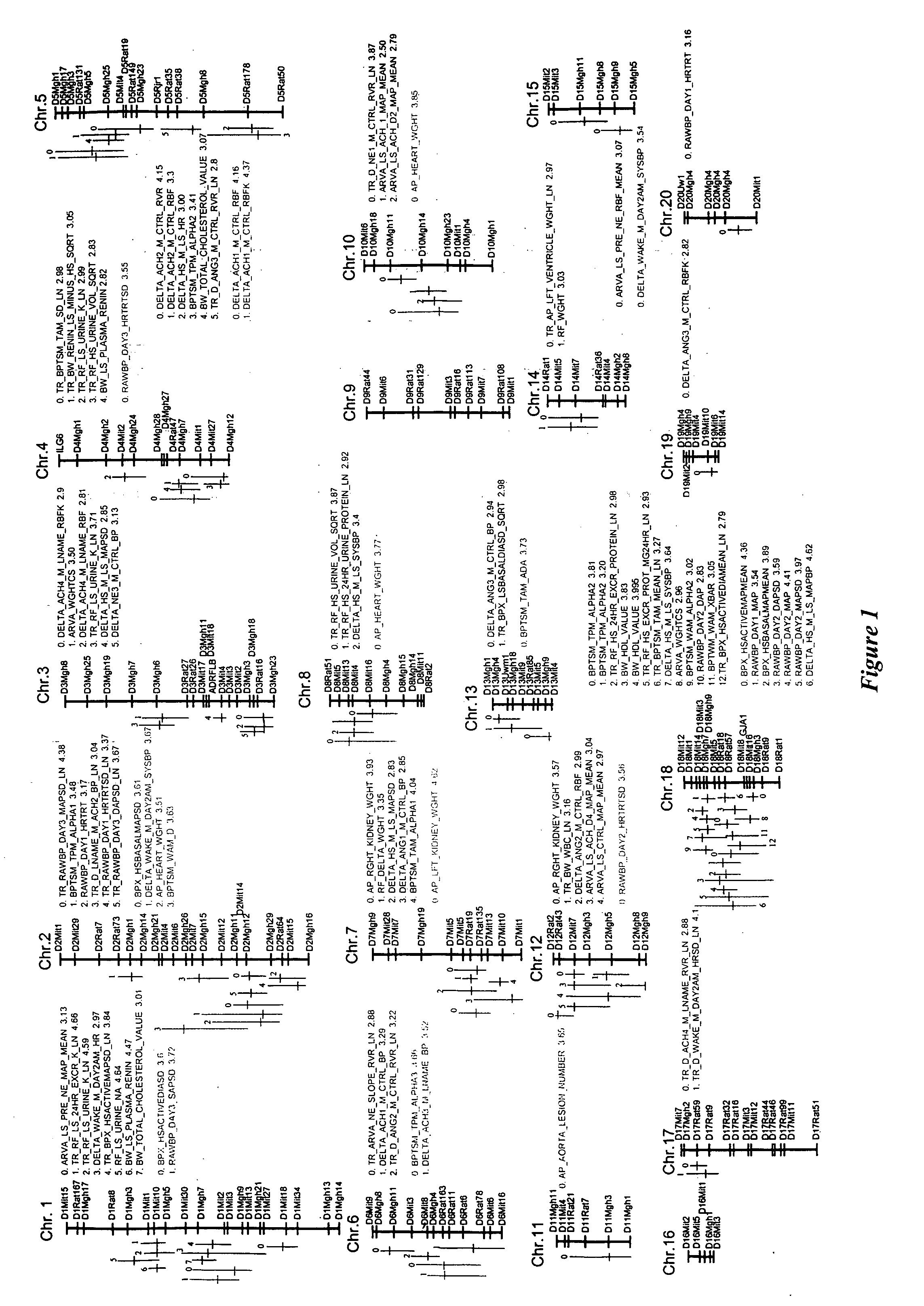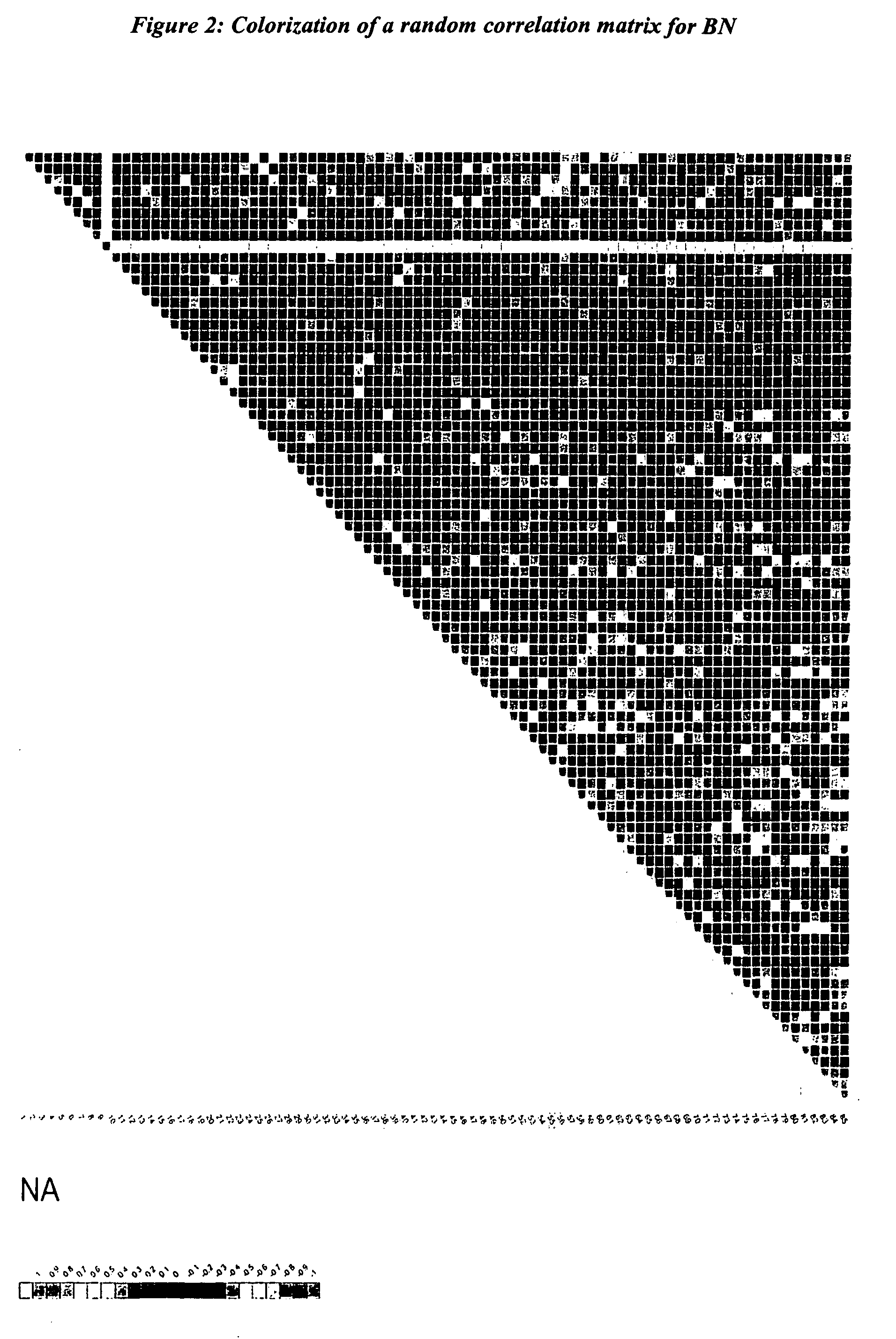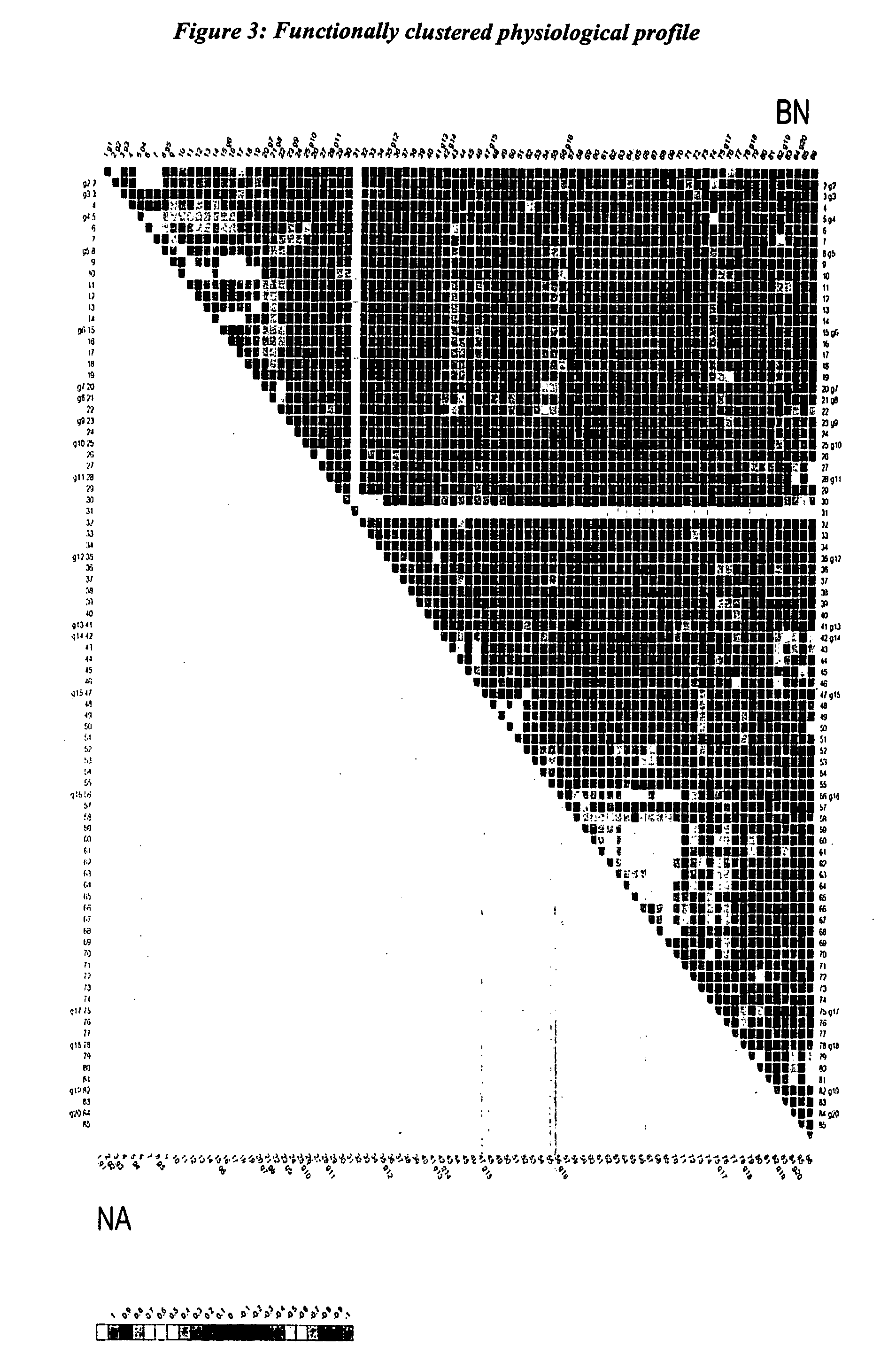Physiological profiling
a technology of physiological profiling and phenotyping protocols, applied in the field of physiological profiling, can solve the problems of difficult identification of genes involved in these diseases, difficult genetic studies of complex multifactorial diseases, asthma, hypertension, etc., and achieve the effect of better phenotyping protocols
- Summary
- Abstract
- Description
- Claims
- Application Information
AI Technical Summary
Benefits of technology
Problems solved by technology
Method used
Image
Examples
example 1
Animals Used in a Study on the Genetic Basis of Hypertension
[0075] F2 progeny rats derived from an intercross of an inbred hypertensive rat and a normotensive rat were used. The inbred hypertensive rat was a Dahl salt sensitive rat (SS / JrHsdMcw), and the inbred normotensive rat was a Brown Norway rat (BN / SsNHsdMcw). Two hundred and twelve F2 rats (113 males and 99 females) were extensively phenotyped for 239 mechanistically relevant cardiovascular, neuroendocrine, and renal phenotypes, including a number of cardiovascular stressors, both dietary and pharmacological, as described in Examples 2, 3, 4, and 5.
example 2
Phenotyping Protocol for Conscious Animals at High and Low Salt Intakes
[0076] Rats were maintained on a high salt diet (8% salt) from the age of 9 to 13 weeks. During the fourth week of the high salt diet, arterial pressures of un-anesthetized rats were measured for three hours each day for three days. All blood pressure (BP) measurements were made with the animals unrestrained in their home cages as described previously (Cowley Jr. et al. (2000) Physiological Genomics 2:107-115). Implanted arterial catheters were used in determining arterial pressures. Data were collected at a rate of 100 Hz and reduced to one-minute averages; data for time series analysis were reduced to one-second averages. At the end of the third high salt day, animals were salt-depleted and placed on a low salt diet. One and a half days following furosemide-induced salt depletion and switching to a low salt diet, arterial pressure responses were determined. The day-night light cycle for all rats ran from 2:00 ...
example 3
Phenotyping Protocol for Renal and Peripheral Vascular Reactivity in Anesthetized Animals
[0082] Rats were anesthetized with 30 mg / kg of ketamine and with 50 mg / kg of Inactin administered intraperitoneally. Catheters were implanted in the femoral artery and vein, and an electromagnetic flow probe was placed on the left renal artery via a midline incision. An intravenous (iv) infusion (50 μL / min) of isotonic saline containing 1% bovine serum albumin was performed to replaced fluid loss. After a 45-minute equilibration period, control values of arterial blood pressure and renal blood flow (RBF) were measured for 15 minutes. Next, animals were given iv infusions of angiotensin II (20, 100, 200 ng / kg / min) and norepinephrine (0.5, 1, 3 μg / kg / min) for 5 minutes after which renal and peripheral vascular responses were determined. Following recovery of pressure to baseline values, animals were given two successive doses of acetylcholine (ACh) (0.1 and 0.2 μg / kg / min as bolus doses) after whi...
PUM
 Login to View More
Login to View More Abstract
Description
Claims
Application Information
 Login to View More
Login to View More - R&D
- Intellectual Property
- Life Sciences
- Materials
- Tech Scout
- Unparalleled Data Quality
- Higher Quality Content
- 60% Fewer Hallucinations
Browse by: Latest US Patents, China's latest patents, Technical Efficacy Thesaurus, Application Domain, Technology Topic, Popular Technical Reports.
© 2025 PatSnap. All rights reserved.Legal|Privacy policy|Modern Slavery Act Transparency Statement|Sitemap|About US| Contact US: help@patsnap.com



